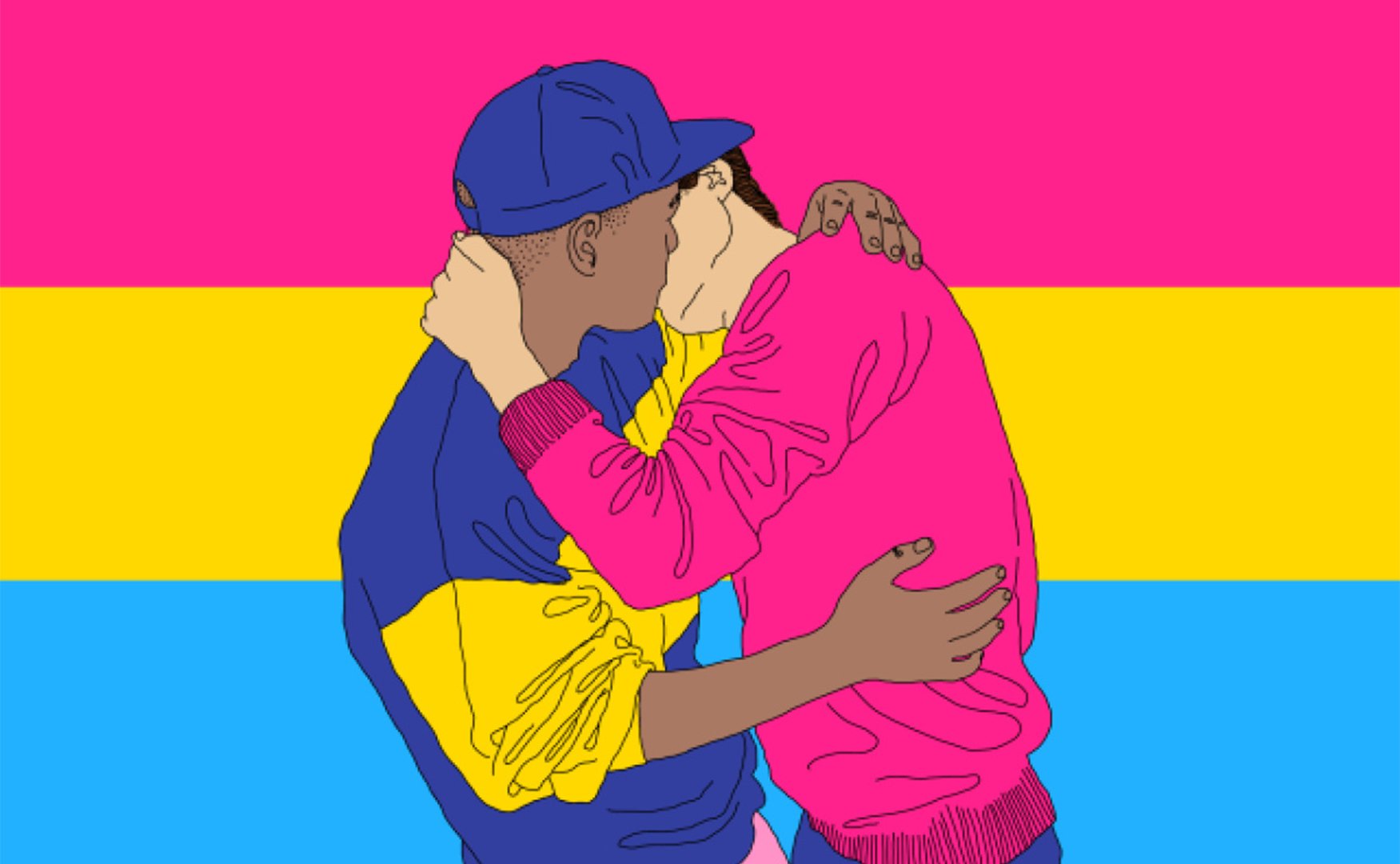
I’ve come to deliver you a mini revolution: sexuality isn’t fixed. Ask any queer, and they’ll tell you that their sexual sense of self has changed over time. My own is like a jungle path, lush and seductive. Sometimes, I get lost in it, almost like the wildlife has swallowed any landmark for me to follow.
But every once and awhile, I find a clearing to rest in, a title or identity that fits me – at least for a bit. I know I’m not alone in this shifting sense of self; I once saw a tweet that said identifying as L, G, B, and T at different times in your life is like the EGOT of the LGBT community.
All of us who exist outside the lines of “straight” or “gay” know: sexuality is less like a single pool and more like a river of titles, identities, lovers, and pronouns, all rushing around us, constantly in flux.
There’s a reason that fluid is such a popular way to describe gender and sexuality. That river of our desires may be constantly changing, but the scenery remains the same. We’re still the same people, just ones that understand ourselves a little more deeply.
That constant flow around me is why my identity has changed so vastly over the years. Nowadays,I identify as pansexual – but the path wasn’t always smooth.
In the early 2000s, I was just hitting puberty when I caught a snippet of some standup comedian on television. He seemed so confident, so grown up. When he told his audience that there comes a time in everyone’s life where they stop and ask themselves whether they’re gay or not, I didn’t question him. According to this guy, when you asked that question, you’d either think, “Yep, totally gay,” or “Nope.” Either way, you were supposed to have an answer in hand, and then move on with your life.
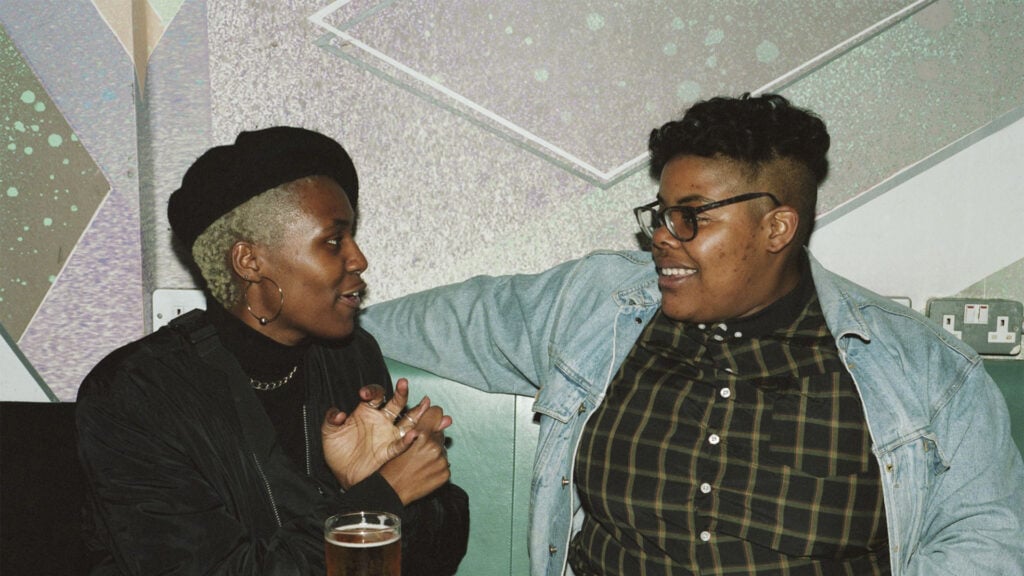
I tried asking myself the question, and my stomach sank. I couldn’t answer. I wanted to say yes and no. It didn’t help that in the same year, I caught But I’m a Cheerleader on late-night television, after my parents had fallen asleep. To make things even worse, I’d already been confused by more mainstream movies: just about every character in The Mummy was hot, and this one scene in Blade made me tingling from head to toe for all three actors.
It seems silly now, with the push for LGBTQ equality that’s happened in the past twenty years, but in 2000, I was horrified. Since I found all these women hot, I believed I wasn’t allowed to find men attractive, too. I genuinely mourned, grieving for Brendan Fraser and his middle part. It took me several years to realize that it was alright to like him and Rachel Weisz at the same time.
Two confusing years later, I landed my first boyfriend. The thing was, I didn’t like kissing him, and so I kept kissing my girl friends instead, wondering if I’d ever like boys in real life. It took five years, but finally, after I first saw that comedian’s confusing joke, I kissed a boy I was actively interested in. Growing up in the deep south, I was elated. Having a boyfriend was like a suit of armor.
So, I pretended to be straight. Before, only three people had signed my yearbook one year – the same year boys threw things at me for being gay. But by the time I graduated high school, boyfriend still in tow, playing straight had paid off (or so I thought). I was voted “Most Likely to be Famous.” People seemed to like me, more or less.
Inside though, I was a wreck, attracted to some of my friends and burying each surge of desire. It didn’t help that my lust for my boyfriend was genuine. Things didn’t get better in college. I fell in love with a man. An adult, M-A-N, man. He was the hottest human I had ever seen, and I cherished everything about him – until we broke up (spoiler alert: this man is now my husband).
During our months apart, I slept with people. Often. The trouble was, I couldn’t find a single man who stirred the dust gathering at the base of my spine. At best, I thought a few were fun company. At their worst, I felt repulsed by their touch. Women, though? Oh, boy. Some were so striking I had to leave parties, afraid of my own desire. As if breaking up with the love of my life weren’t enough, I was suddenly wondering if I was a lesbian to boot, and if my now-husband had been some fluke.
Because I wasn’t just in love with his personality, his humor, or his compassion. From a very shallow standpoint, I thought he was hella sexy; some of my journal entries during that time were purely dedicated to mourning the loss of his divine D.
When we got back together, I knew I couldn’t turn off the knowledge our separation had awakened in me. This time, I didn’t try. I was done playing straight, and pinned the word “bi” to my chest.
Over the years, as we’ve grown together in our polyamory, I’ve reevaluated my sexuality and gender time and again. And I finally realized something: my attraction to folks has little to do with their gender presentation, and everything to do with their essence, their swagger. For lack of a better word, their “vibe.”
Bisexual suddenly didn’t cut it. My sexual orientation was unfolding in a new direction: I began to identify as pansexual.
Pansexuality, bisexuality. From the outside (and hey, even to those of us who are elbows deep in this world), the difference can seem like little more than semantics. After all, neither party is limiting themselves to just one flavor; if straightness was vanilla and gayness were chocolate, then bisexuality and pansexuality would be a soft serve swirl, right?
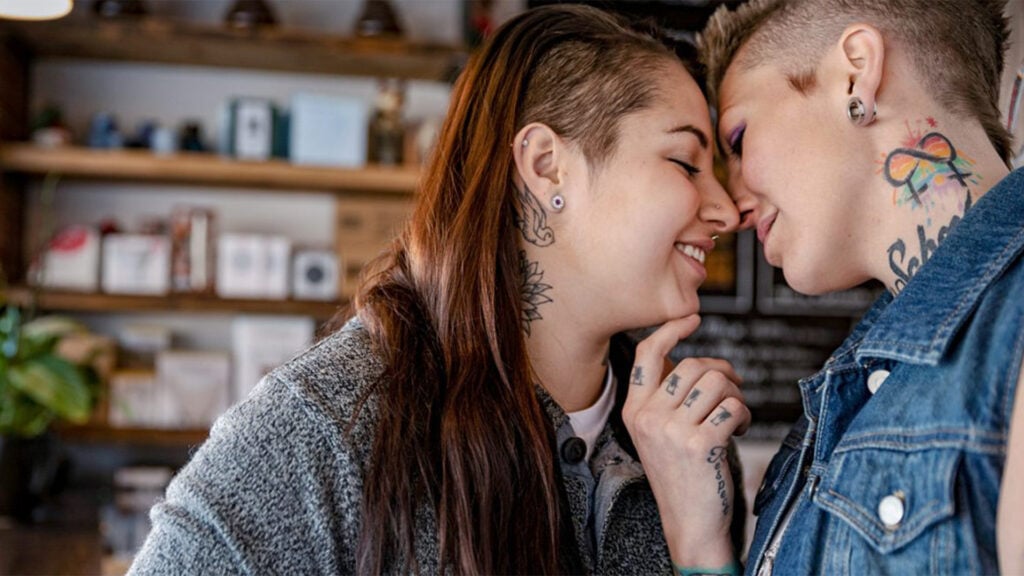
Not quite. I used to feel that way, but as I read lit and watch videos dissecting gender and sexuality, the space separating bisexuality and pansexuality widens. And the more I learn, the more I understand how important these differences are to our senses of self.
I’ll be honest here. When I first rejected bisexuality and took up the pansexual mantle, it was largely because I thought that bisexuality enforced a gender binary. In my defense, they do both have the word “bi” in there, and I know I’m not the only person who thought this. Nowadays, I know better, but as I looked more deeply into the true meaning of the word “bisexual,” I came to realize that although my reasons for dropping the bi label were wrong, I still stick by pan as the more fitting word for me.
But what’s the difference? It’s not an enforcement of only two genders. For at least thirty years, and likely much longer than that, the bi community has rejected the gender binary. A 1990 issue of the Bay Area queer bi+ publication called Anything That Moves urged readers not to “assume that bisexuality is binary...in fact,” they said, “don’t assume that there are only two genders.” The understanding of a space beyond the binary is an essential part of bi+ culture. And although TERFs exist even in the LGBTQ community, the overwhelming majority of bi folks are attracted to and embrace people on all points of the gender spectrum.
But if bisexuality is about attraction to more than two genders, then how is pansexuality any different? The key is in how we define each word. Robyn Ochs, a bisexual advocate, uses that title because of her widely accepted take on what her orientation means. According to her, bisexuality is the “potential to be attracted – romantically and/or sexually – to people of more than one sex and/or gender, not necessarily at the same time, not necessarily in the same way, and not necessarily to the same degree.” Her definition isn’t the only one, and other sources commonly define bisexuality less as attraction to “men and women,” and more as attraction to “like and unlike.” Put simply, bi folks are attracted to both their own gender and other genders.
While people who are pansexual are attracted to these same folks, the definition has a key difference. Most people agree that being pansexual means having “sexual desire or attraction” that isn’t “limited to people of a particular gender identity or sexual orientation.” Confused about the difference? Look closer.
While bisexuality’s definitions vary, the common thread is that a bi person’s attraction is influenced by gender. In a positive way, gender is still a factor that informs their attraction. Pansexuality, on the other hand, doesn’t hinge on gender, and our attraction to others has nothing to do with our own gender identity. In fact, while we can be deeply aroused by someone’s gender expression, it doesn’t factor into how or why we’re attracted to them. And unlike bisexuality, pansexuality doesn’t factor in your own gender identity. It’s not a matter of yearning after someone who looks like or feels like me.
I’m not saying that pansexuality is some problematic fairytale of gender blindness. Attraction like mine sees gender. I relish it and all its tasty nuance. It’s just that everywhere on the scale of femme to masc, cis to not, is a delight. Pansexuality doesn’t overlook those differences, it acknowledges the differences in gender and expression without those unique aspects being factors in the nature of our ardor. Instead, pan babes like me are more attracted to what someone’s throwing down, regardless of how they present. It’s hard to explain to someone who isn’t pan. Kind of like if you were asked to describe exactly what makes chocolate so divine to someone who’s never tasted it. Going back to that soft serve analogy, while bi people appreciate the unique earthy tones of chocolate, and the brightness of vanilla, pan folks just like the whole dang cone, without teasing it out.
What can I say? When someone’s hot, they’re just hot. I can’t chock it up to anything about their gender identity. At the same time, we have a lot of overlap together. A lot of my friends identify as bi, and it’s beautiful. We swap stories of cuties, embrace each other’s sexualities and lovers, and have a strong sense of community with one another. I feel much deeper communion with my bi fam than I do with anyone more firmly entrenched on either side of the Kinsey scale.
One of my favorite feelings about being pansexual is the overwhelming sense of release in relation to my own gender identity. Bisexuality has to do with loving someone whose gender is like your own. For me, that’s difficult. My evolving exploration of my own gender identity is something I’m slowly becoming more open about.
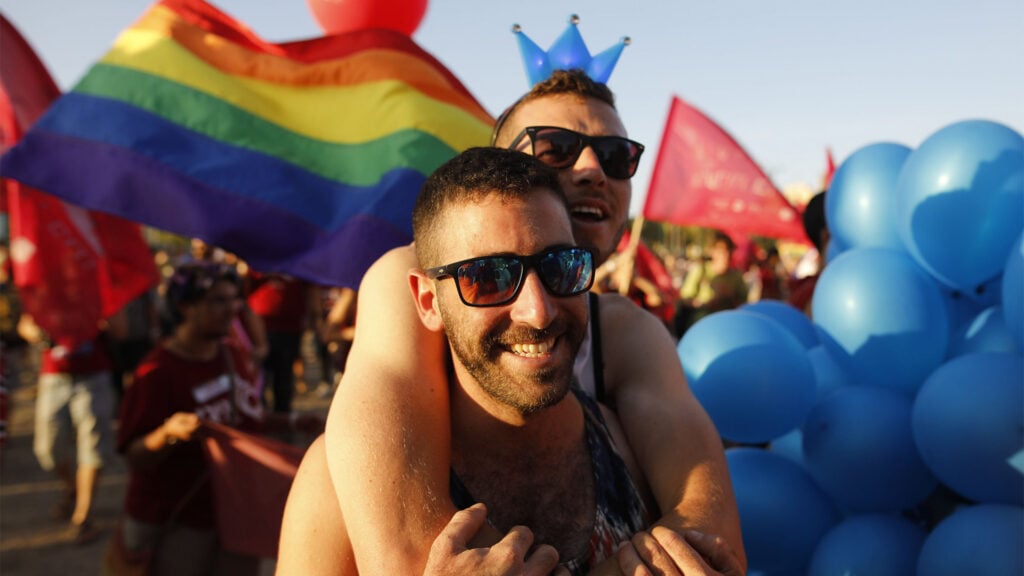
2020 has been a tender and frightening year. I think I’m leaning towards greater vulnerability because that’s the only choice I have – that or hiding on the couch, eating chips and binging Netflix. Part of my chaos as a child around my sexuality was because my gender isn’t so fixed. I love femme presentation. My favorite color is glitter, and a flower crown is always my accessory of choice. Always. But still, I’ve never felt wholly comfortable being called a woman. In the past month, I found the term “demigirl,” and I think I like it.
But I’m almost thirty, and I’ve only spent two weeks trying on this new term. If my own gender expression is so constantly in question, how in the world can I lay claim to a sexual identity that is based on my attraction to both my own gender and other genders?
Would that mean I’m seeking demigirls? I guess that would be interesting, but I think I’d rather have a cup of coffee to talk about demigirlhood than necessarily seek out a lover whose gender is just like mine.
The emphasis on sameness just doesn’t work for me. Next month, next year, who knows how my identity will land? Being pansexual helps me keep that door open, allows me one constant in a world that can feel ever changing. My partners, too, tend to be nonbinary or deeply reflective of their gender. My husband and I spend a lot of time deepening our understanding of our own genders.
And at the risk of sounding like a total pansexual, queer, or bi+ stereotype, I choose this identifier because I love the breadth of options that it awards me. I love the possibility of attraction in every encounter. This flexibility in my relationship to gender, sexuality, and intimacy leaves every door open, and in each meeting, I see everything our connection could be.
While fellow bi+ babes will agree when I say that the joy of our orientation is in the possibilities, I know not everyone feels that way. Bi, pan, polysexual (not to be confused with polyamorous), omnisexual, and queer cuties sustain ourselves on that vibrant fluidity.
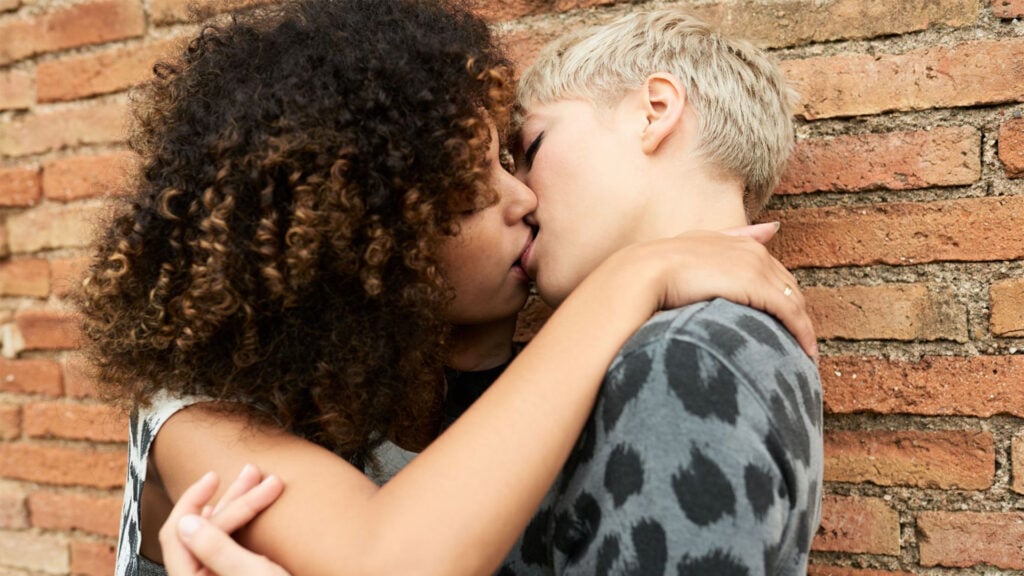
Identifying under our big umbrella wasn’t always that easy – and in many cases, it still isn’t. As a teenager, and well into my twenties, I was taught that bi+ people were somehow subpar. For starters, straight people assume you’re one of them at basically every turn – and if you come out, they suddenly recall with horror all the casually homophobic things they said in front of you. Ask any of us, and we’ll tell you we feel like a spy, peering in on the straight community, mostly passing unnoticed.
If you think our own community would be much more inviting to us than straight folks, I have some bad news. We’re often put on the sidelines of our own group, too. It happens all the time. Once, a lesbian “friend” told me I didn’t count in the LGBTQ community because of my husband’s gender. Other lesbians and gay men ask belittling questions, doubting my ability to fall in love with someone that would, in their eyes, make me “queer enough.” A few months ago, I went to a queer cocktail hour. In the corner sat a cluster of people who openly judged and questioned all the bi and pan attendees. Where we were supposed to be welcome as family, we’re seen as “less than” for failing to fold neatly into a box that works well for them.
On either side, straight and gay folks often shift their understanding of a bi+ person’s sexual orientation depending on who they’re dating at the moment. To them, you’re straight, or you’re not. And when those people do manage to understand that we’re pan or bi, we’re painted as greedy. We’re taught that it’s wrong of us to love all flavors, and we’re written off as needy cheaters whose insatiable and deviant desires can never be slaked. In short, we’re sluts, even to our own community just look at the way RENT and The L Word portrayed us to see what I mean. The perspectives birthed from our own community only reinforced straight people’s ideas that the bi+ community was somehow dirty..
Still, there’s a lot of light to love. At that cocktail hour last month, I was lucky. There were people judging pansexuality, but all I had to do was pick up my drink and head to another side of the table to sink down next to community who got me. The friends I have from that Meetup fall all over the LGBTQ map of identity, and even those who exist on one end of the Kinsey scale love me for exactly who I am.
The narrative about pansexuality is changing, and the LGBTQ community is starting to realize we’re stronger together. Now more than ever, I feel safer presenting myself exactly as I am to the community, and don’t feel the need to put an asterisk at the end of anything I say about my truth. It’s no coincidence that pan folks have begun to emerge from the corners of society. It seems like the storm is ending. We’ve always been here – and if Rosa Diaz on Brooklyn 99 shows us anything, it’s that those negative stereotypes are sputtering out.
Even my handful of straight friends have overcome the stereotypes. Not that I’d be friends with straight folks who hadn’t, but in the past few years, I’ve noticed a trend. I’ve made more friends who are straight men, and felt embraced by them. We’re all learning to do the work together – straight, queer, and everyone in between.
It’s about time. Putting morals or a culture of acceptance to the side, pansexual people are just rad. Maybe I’m biased, but every pan person I’ve met is a blast. We’re fun, receptive, and eager to learn. The way we approach sexuality ripples out into the rest of our lives: because everything is a possibility for connection and beauty, we value new experiences, big and small. We come into the world with open arms, trusting you to love us back, confident enough to keep moving forward if you don’t.
The stereotypes about our promiscuity or unreliability do still sting. The myth that we’re incapable of commitment is isolating, and my decision to become polyamorous was ensconced in shame, since it felt like I was confirming all the negative things people had said about my sexuality over the years.
But the thing is, I’d take those negative and hurtful things time and again in exchange for my identity. Because I love us, I love pansexual folks, and I wouldn’t change who I am for anything in the world. The capacity to embrace all kinds of people is a blessing, one that I feel honored to have been endowed with.
My journey towards pansexuality isn’t the right path for everyone. Many people landed on bi, and felt at home there. Others have been given one label and stuck to it their whole lives. So long as we’re happy and treating each other with grace, what’s the harm?
Sexuality offers no magnetic north, no guiding star telling us what the best way to be is. But within each of us there is a compass, its needle unwavering in guiding us to our personal truth.
Being so radically open on the internet isn’t easy. But our world has gone through a lot of hurt right now, and honesty seems like the only way I can move forward. I hope to take the best parts of my pan identity, that open heart and willingness to connect, and give it to you. Even if you just stumbled across this article on accident, and found this strange demigirl pouring her heart out when you were just trying to buy used panties in peace, I mean it. I want to build that connection with you all.
If bold intimacy is just another way I’m falling for the pansexual trope, I’ll do it the way I’ve fallen for everything else: with open arms and an even more open smile.